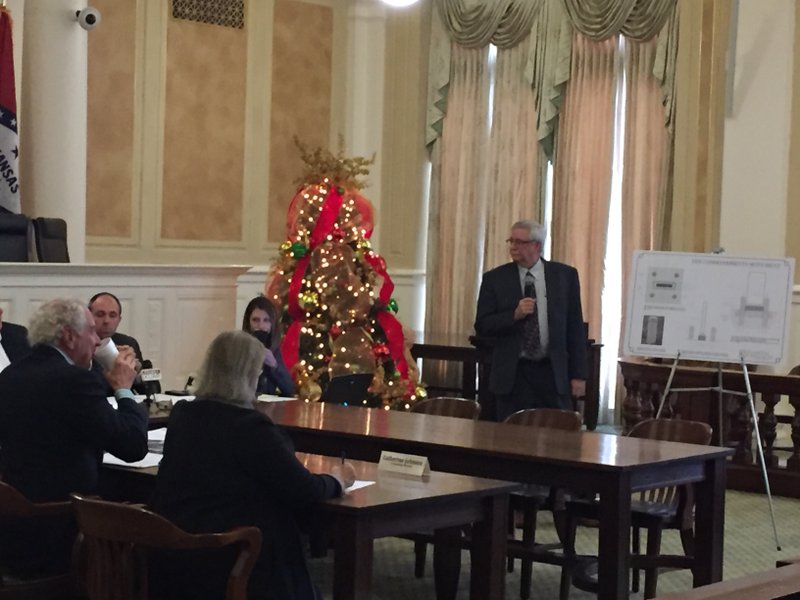The second version of a Ten Commandments monument at the Arkansas Capitol is slated to have extra protections to prevent it from meeting the same fate as the first one, which was destroyed less than a day after it was unveiled.
In a meeting Tuesday with North Little Rock architect Gary Clements, a subcommittee of the Arts and Grounds Commission at the state Capitol approved a new plan for the monument's base aimed at preventing its destruction.
The original version was rammed with a car driven by Michael Tate Reed II less than 24 hours after it debuted in June.
The plan calls for a 3-foot-tall concrete bollard in each corner of the 8-square-foot concrete base, similar to those ringing the Little Rock Nine Memorial on the Capitol's northeast side.
The hip-high pillars will each stand about 5 feet apart, close enough so that a car can't pass through, Clements explained.
If someone were to run into one, the top part would detach. The bollards need to be lifted up perfectly straight with special machinery to be removed, he said. Each weighs about 150 pounds and costs between $300 and $400.
Clements said the design allows for a barrier without distracting from the monument but acknowledged the plan wasn't an all-encompassing solution to vandalism.
"You could put all the bollards in the world around it, but it could be run over with a bulldozer," he said. "This is a reasonable security measure without going to the extreme."
Kelly Boyd, chief deputy secretary of state, said the monument itself has been treated to protect against graffiti.
Sen. Jason Rapert, R-Bigelow, sponsored a 2015 law to erect the monument on the grounds.
“There’s a lot of scenarios, but based on what I’ve been told, it’s adequate to prevent a repeat of what happened,” he said in an interview Tuesday.
Since being accused of smashing the monument, Reed, a 32-year-old Van Buren resident, has been declared unfit to stand trial at the present time and indefinitely committed to the State Hospital.
The 6,000-pound, 6-foot-tall marker was completed in October. Like the original, it was paid for with private funds raised by the American History and Heritage Foundation, which Rapert created.
Less than two weeks after the monument was destroyed, the foundation had garnered roughly $55,000 in donations, Rapert said in July. That includes $25,000 from the executive producers of the Christian God’s Not Dead movie series, the third installment of which filmed in central Arkansas in the fall.
Other than the bollards, the monument's design is the same as the original, Clements said.
The security posts around the Little Rock Nine Memorial were installed shortly after the sculpture was dedicated.
"People didn't like that monument either — or some people didn't," Clements said, recalling some negative comments he heard at the time it was being installed.
Members of the subcommittee expressed concerns that someone could still take a sledgehammer to the 20 Commandments monolith but ultimately voted to approve the plan.
A public hearing on the proposal will be held at the Capitol at 10 a.m. Thursday. The plan will be up for final approval from the full commission at its Dec. 12 meeting.
Boyd told the subcommittee Tuesday that he planned to propose similar safeguards in other places on the Capitol grounds sometime in the next year.
Rapert said he was happy to see the monument reinstalled.
"We’d put it right back up” if someone were to damage it again, he said.
